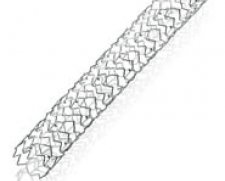
Categorised under:
Cardio-thoracic
>
Coronary intervention
>
stents drug eluting
The aim of this study was to investigate the impact of reference vessel diameter (RVD) and lesion length (LL) on the relative safety and efficacy of everolimus-eluting stents (EES) and paclitaxel-eluting stents (PES).
Credits: PubMed, JACC Cardiovasc Interv. 2011 Nov;4(11):1209-15.
Credits: PubMed, JACC Cardiovasc Interv. 2011 Oct;4(10):1104-15.
We sought to determine whether the differences in outcomes present between everolimus-eluting stents (EES) and paclitaxel-eluting stents (PES) in the SPIRIT (Clinical Evaluation of the XIENCE V Everolimus Eluting Coronary Stent System) IV trial at 1 year were sustained with longer-term follow-up.
Credits: PubMed, J Am Coll Cardiol. 2011 Jun 28;58(1):19-25.
Several potential risk factors for developing ST may well have been minimized through the selective XIENCE V thin strut design, biocompatible polymers, and antiproliferative drug usage.
Credits: Pubed, J Interv Cardiol. 2011 Aug;24(4):326-41.
We compared the safety and efficacy of the XIENCE V (Abbott Vascular, Santa Clara, California) everolimus-eluting stent (EES) with the TAXUS Express (Boston Scientific, Natick, Massachusetts) paclitaxel-eluting stent (PES) among the large cohort of randomized diabetic patients enrolled in the SPIRIT IV (Clinical Evaluation of the XIENCE V Everolimus Eluting Coronary Stent System) trial
Credits: J Am Coll Cardiol. 2010 Dec 14;56(25):2084-9.
The specific aim of the SOS-Xience V study is to examine the 12-month incidence of binary angiographic in-stent restenosis after implantation of the Xience V stent in aortocoronary saphenous vein bypass graft lesions.
Credits: ClinicalTrials.gov
We evaluated the role of gender on clinical and angiographic results of the everolimus-eluting stent in the SPIRIT III trial.
Credits: Catheter Cardiovasc Interv. 2009 Nov 1;74(5):719-27.
Critical limb ischemia, the most severe form of peripheral arterial disease, results in extremity amputation if left untreated. Endovascular recanalization of stenotic or occluded infrapopliteal arteries has recently emerged as an effective form of therapy, although the duration of patency is typically limited by restenosis. Recently, it has been suggested that drug eluting stents originally developed for the coronary arteries might also be effective in preventing restenosis in the infrapopliteal arteries.
Credits: J Vasc Surg. 2012 Feb;55(2):390-8.

Did you know you can Register for FREE with this website?
Registration gives you full access to all of the features of WhichMedicalDevice. Find out more ...
WhichMedicalDevice is a FREE resource created by clinicians for clinicians.
Registration is free and gives you unlimited access to all of the content and features of this website.
Find out more...Registration is free and gives you unlimited access to all of the content and features of Which Medical Device. Find out more...
Which Medical Device is a community of clinicians sharing knowledge and experience of the devices and procedures we use on a daily basis. We ask that our members register with us so that we can maintain the unbiased and independent nature of our content. Registration is quick and free.
We do not make your details available to any third parties nor do we send unsolicited emails to our members. You can read our Privacy Policy here.